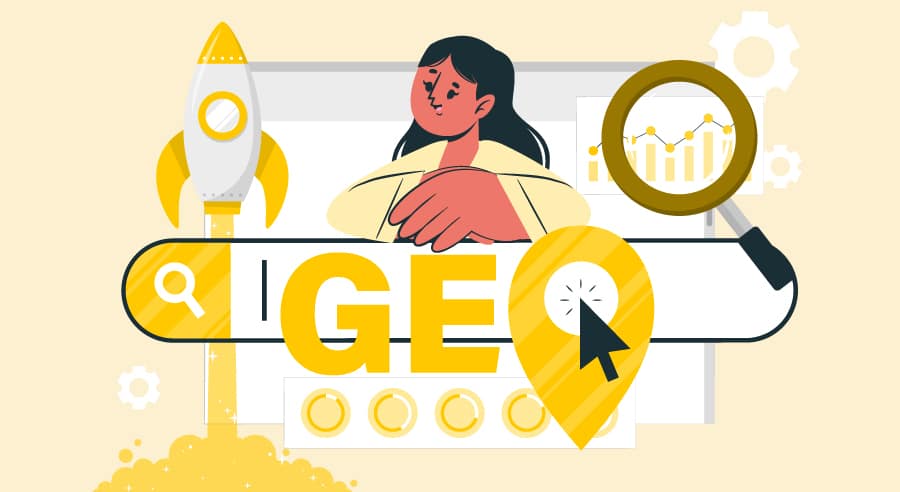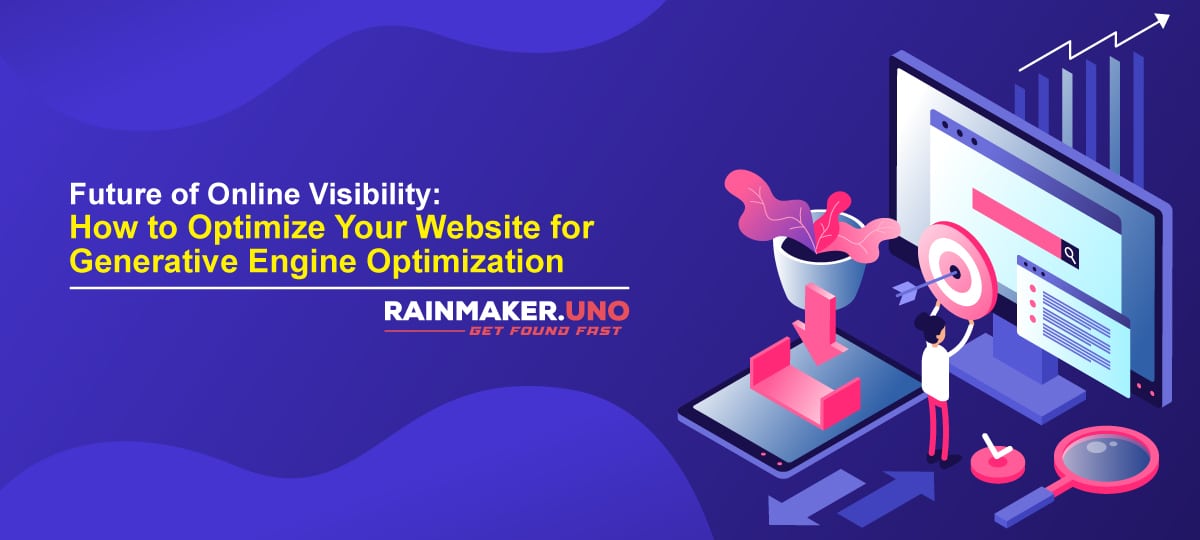The shift towards generative engine optimization represents a pivotal moment in digital marketing and search visibility. As AI-driven platforms take center stage, traditional SEO strategies are no longer enough to ensure visibility. GEO offers a future-forward approach, where optimizing content for AI systems becomes critical to maintaining and enhancing brand presence.
To stay ahead in this evolving landscape, businesses must adapt their strategies, focusing on creating content that AI can easily interpret, generate, and present to users. This involves embracing natural language queries, structured data, multimedia elements, and broader content distribution across various platforms. By aligning with the core principles of GEO, brands can not only maintain visibility but also thrive in an AI-driven information ecosystem.
Incorporating these strategies will help you navigate the new era of search and position your brand at the forefront of innovation, ensuring relevance in the rapidly changing digital world.
Generative Engine Optimization (GEO) is reshaping how users search for and interact with information online.
While traditional SEO has long been the cornerstone of online visibility, it’s no longer sufficient in an era where AI-driven platforms are becoming the primary sources of information. As more users turn to AI systems like ChatGPT, Perplexity, and Google AI Overviews, relying solely on traditional SEO strategies leaves brands at risk of losing visibility.
This blog is designed to guide you through optimizing your website for GEO, ensuring that your brand remains discoverable and competitive on the AI-driven platforms that are defining the future of search and information retrieval. As GEO continues to reshape SEO and digital marketing, this guide will equip you with the knowledge needed to navigate these dynamic changes and stay ahead in the game.
Section 1: What is GEO?

Generative Engine Optimization (GEO) is the process of optimizing digital content to ensure visibility and relevance on AI-driven platforms that generate and curate information autonomously. Unlike traditional SEO which focuses on optimizing content for search engines like Google or Bing, GEO is tailored specifically for AI systems such as ChatGPT, Perplexity, and Google AI Overviews. These platforms don’t just rank content; they generate responses based on vast datasets, including websites, databases, and other online resources.
How GEO Differs from Traditional SEO
Traditional SEO is centered around improving a website’s ranking on SERPs by optimizing keywords, and meta descriptions, creating backlinks, and better site structure. It relies on Google algorithms that analyze these factors to determine relevance and ranking.
GEO, on the other hand, is about optimizing content so that it can be effectively used by AI models to show personalized results to the users. This involves understanding how AI interprets and synthesizes information on a web page, ensuring that content is clear, concise, and aligned with the types of queries users might ask AI systems. GEO also focuses on the context and depth of content, as AI platforms prioritize delivering comprehensive and coherent responses.
Role of AI-Driven Platforms in Content Discovery and User Interaction

AI-driven platforms have become pivotal in how users discover and interact with content. Unlike traditional search engines that list results for users to choose from, AI systems deliver direct answers, summaries, or even generate content on the fly. This shift means that content needs to be structured and optimized not just to be found, but to be utilized effectively by AI as part of its response mechanism. As more users turn to these platforms for quick and reliable information, the importance of optimizing content for AI interaction has skyrocketed.
Why GEO Matters

AI’s impact on search behavior is profound and continues to grow. According to recent studies, a significant percentage of users are now interacting with AI-driven platforms daily for information and decision-making, rather than traditional search engines. For instance, OpenAI’s ChatGPT, which powers various applications, has seen a surge in usage, becoming a go-to source for quick, AI-generated responses. This shift is not just about convenience; it reflects a change in how users trust and engage with information.
Positioning Brands Ahead of the Curve with GEO
As AI platforms increasingly dominate the information landscape, GEO becomes a critical strategy for brands looking to maintain and enhance their visibility. By optimizing content for these platforms, brands can ensure that they are part of the AI-generated narratives that users are engaging with. This proactive approach can significantly enhance a brand’s reach and influence, positioning it ahead of competitors who may still be relying solely on traditional SEO methods.
Section 2: The Key Differences Between GEO and Traditional SEO

Traditional search engines like Google and Bing rank content based on a variety of factors, including keyword relevance, backlinks, domain authority, and user engagement metrics such as click-through rates and time spent on a page. The goal is to present the most relevant and authoritative results on the SERPs, where users can select the link they believe will best answer their query. This process relies heavily on algorithms that analyze how well a piece of content aligns with specific search queries and the overall quality of the content as judged by these metrics.
How AI Models Generate Responses
AI-driven platforms, on the other hand, operate differently. Rather than ranking content, these models generate responses by synthesizing information from a vast pool of data. AI models like those used by ChatGPT or Google AI Overviews don’t just pull up a list of links; they create comprehensive, contextually relevant answers by understanding the intent behind a user’s query and generating content that directly addresses it. This means that the content doesn’t just need to be optimized to be found—it needs to be structured in a way that makes it easy for AI to interpret and incorporate into its generated responses.
Effective Content and Keywords for GEO vs. SEO
In traditional SEO, the focus is often on specific, high-volume keywords, meta tags, and creating content that aligns with search engine algorithms. Long-form content, targeted keywords, and strategic link-building are key tactics.
In contrast, GEO requires a different approach. Here, content must be optimized for natural language and conversational queries, which are more likely to be used by AI systems when generating responses. This includes using phrases that resemble how people naturally speak, focusing on context-rich content, and ensuring that information is presented clearly and logically. Keywords in GEO are less about exact matches and more about thematic relevance and the intent behind user queries.
Content Consumption Patterns
When users interact with traditional search engines, they are presented with a list of links and snippets that they can browse through to find the information they need. This process often involves comparing multiple sources, reading through different articles, and synthesizing the information themselves. Users have control over which source they trust and choose to engage with.
In contrast, AI-generated content provides a direct answer or summary based on the query. Users interact with AI-driven platforms expecting quick, concise, and accurate responses without needing to sift through multiple sources. This shift towards AI-generated content means users are consuming information more passively, relying on the AI to filter and present the most relevant data.
Importance of Optimizing for Conversational Queries and Natural Language

As AI-driven platforms rely heavily on understanding and generating natural language, optimizing content for these platforms requires a focus on conversational queries. Unlike traditional search engines, where short, keyword-heavy queries may be effective, AI models respond better to queries phrased in full sentences or questions. This means your content should be structured to answer common questions directly and clearly, with a focus on natural, easy-to-understand language.
Moreover, content that anticipates follow-up questions and provides comprehensive answers in a conversational tone is more likely to be favored by AI platforms. This aligns with how users interact with AI-driven platforms, where they expect a dialogue-like experience, rather than merely retrieving information from a list of search results.
Section 3: How to Optimize Your Website for GEO

Now that we’ve covered the fundamentals of GEO, let’s explore actionable strategies to optimize your digital marketing efforts for generative engines.
1. Conduct Thorough Topic Research
Begin by pinpointing the topics that are most relevant to your audience. Utilize keyword research tools to discover the questions your audience is asking and the types of information they are searching for. Validate the search volume of these queries on Google and other search engines to ensure there is a demand for the content you intend to produce.
2. Develop Customized Content
Once you have identified key topics, create or optimize content that addresses these specific questions. Ensure your content is high-quality, engaging, and pertinent. Use reliable sources, quotations, and industry-specific terminology to establish authority and expertise. Remember, your audience includes both human readers and AI algorithms that will scan and rank your content.
Incorporate Structured Data
Structured data, like schema markup, provides additional context to your content, making it easier for generative AI to understand and index. This helps ensure that your content is accurately represented in AI-generated results.
4. Prioritize User Intent
Grasping the intent behind a user’s search query is vital for GEO success. Align your content with the specific needs and intentions of your audience, whether they are seeking information, trying to navigate to a site, or ready to make a purchase. Focusing on user intent will help you outperform competitors and stay aligned with evolving algorithms.
5. Broaden Your Content Distribution
Generative AI engines pull content from a variety of sources, not just blog posts but also platforms like Reddit and Quora. Share your content across these platforms to increase the chances of it being included in AI-generated responses. The more widely your content is distributed, the more likely it will be picked up by AI engines.
6. Incorporate Multimedia Elements
Enrich your content with a mix of visual and interactive components, such as videos, infographics, and quizzes. This not only engages human readers but also appeals to AI-driven search engines that favor diverse and rich content formats. Don’t restrict your content to just text.
7. Utilize Social Media Marketing
Social media marketing and signals also influence how content is indexed and ranked by generative AI engines. Promote your content on platforms like Facebook, Twitter, and LinkedIn to boost its visibility and engagement.
